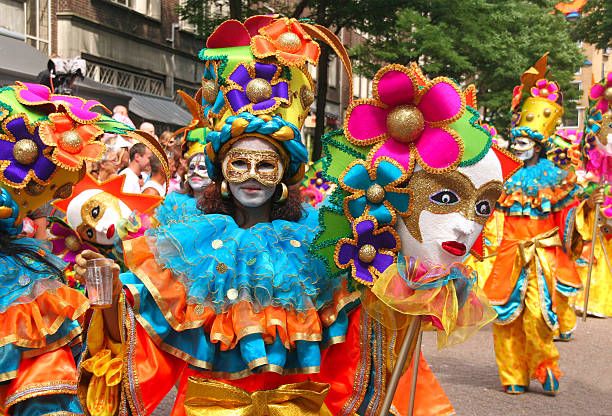Dutch Carnaval and Leiden
Carnaval is a celebration from the Christian tradition, marking the start of the fasting that leads up to Easter, and as such is widely celebrated around the world. In the Netherlands, its tradition is particularly vivid in the southern provinces of Limburg and Brabant, but some cities in the North also take part.
The History of Carnaval
The Dutch tradition of carnaval started in the 14th century but disappeared during the Protestant Reformation. It made a comeback in the 19th century under the French rule as a form of revival of the Dutch roots against the foreign occupation. However, the tradition as we know it today started after World War II. Since it has once again become part of the identity of many Dutch citizens.
In medieval times, carnaval was the only moment in the year where everything was accepted, the order of the world was upside down, social roles were reversed, and fool was the normality. These ‘crazy’ days were a way to prepare to the forty days of fasting and penitence that led to Easter but were also used by the aristocracy to control the poorer masses. In fact, it was commonly thought at the time that granting the masses the freedom to control and rule over these few days each year reduced the occasions of insubordination. And rule they would, as it was common to name a ‘king’ of the carnaval.
Traditions
Of all these meanings now, there is not much left, but some traditions remain. It’s custom to name a Prince (and a Princess) of carnaval. Normally the Prince is nominated by the City Council of 11, on 11 November – 11 being the “fool’s number” – and symbolically receives the keys of the city from the mayor at the beginning of carnaval.
Role reversal is still part of the carnaval tradition, but while in the past it was a way to break from strict conventions, now it’s a chance of satire. In fact, people usually dress up in funny costumes, often politically inspired, but you can find any type of attire: from superheroes, to animals, and anything that can become a funny mask. Part of the role reversal is the Dutch tradition of renaming their cities during the days of carnaval: for instance, Leiden becomes Sleutelgat (‘key village’).
Other traditions in the Netherlands include parades on colourful floats and carnaval music, often played by marching bands and accompanied by comical lyrics. But most importantly, carnaval is a chance to get in the street, dance, drink, and have fun.

Leiden and Carnaval
Now, if you live in the Leiden region you might be wondering why you haven’t witnessed any of this foolishness yet. The answer is simple, and it’s rooted in history despite Dutch carnaval being such a recent tradition. As mentioned at the beginning, carnaval is a religious tradition and it was silenced during the protestant Reform in the Netherlands. The history of the Netherlands is particularly tied to the division between Catholics and Protestants, a division that was quite felt until recent times.
Historically, the southern provinces of Brabant and Limburg remained Catholic, while the cities in the north embraced Protestantism. As the Protestant Church did not approve of the carnaval foolish celebrations, the tradition was quickly abandoned in the northern provinces. As a consequence, its revival in the 19th century first and then in World War II aftermath engaged mainly the people in the South.
Carnaval parades and celebrations happened for some years in Leiden and the Leiden region, though the population grew less and less invested and Leiden carnaval association De Hutspotten was officially dissolved in 2018.
This does not mean that carnaval is not celebrated around Leiden! You can have a taste of Dutch carnaval still in the bulb region (Noordwijk, Sassenheim, Voorhout, and Lisse) and in Delft. Check out this list to stay up to date with the parades in Zuid-Holland.